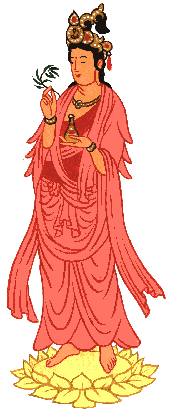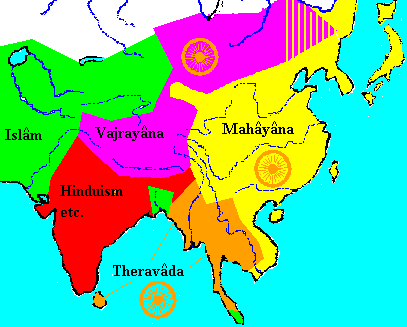The revelation of Buddhism is in its practice: The Noble Eightfold Path, when interpreted dynamically as an ongoing and autonomous, non-prescriptive, investigative and creative process of progressive insight reflecting in human terms wondrous overall existence advancing over time, as Advayavada Buddhism does, is (1) that of our very best (samyak, samma) comprehension or insight followed by (2) our very best resolution or determination, (3) our very best enunciation or definition of our intention, (4) our very best disposition or attitude, (5) our very best implementation or realization, (6) our very best effort or commitment, (7) our very best observation, reflection or evaluation and self-correction, and (8) our very best meditation or concentration towards an increasingly real experience of samadhi, which brings us to a yet better comprehension or insight, and so forth.
By following the Noble Eightfold Path thus you get in tune with wondrous overall existence advancing over time, sorrow, doubt and remorse immediately start disappearing, and your life at once gathers new impetus. The Noble Eightfold Path in Advayavada Buddhism is fully personalized: it is firmly based on what we increasingly know about ourselves and our world, and trusting our own feelings and conscience. Adherence to the familiar Five Precepts and a well-considered understanding of the Four Signs of Being and the Four Noble Truths suffice to start off on the Path at any time. Nirvana is, in Advayavada Buddhism, the total extinction of existential suffering as a result of our complete reconciliation with reality as it truly is. The Path is, in other words, the sure road to enlightenment.

samadhi = total concentration (of the mind, cf. enstasy); non-dualistic state of consciousness in which the experiencing subject becomes one with the experienced object; total absortion in the object of meditation; transcendence of the relationship between mind and object; merging of subject and object; to contemplate the world without any perception of objects; suspension of judgement; turiyatita; satori; bodhi; rigpa; realization of the sameness of the part and the whole, of the identity of form and emptiness, of samsara and nirvana, of the immediate and the ultimate; mystic oneness; perfect attunement with wondrous overall existence; oceanic feeling; wonder, awe, rapture; essential purity; deep love and compassion; awareness of our common ground and the innocence of sex.
The purpose of the autonomous Advayavada Study Plan ASP is that we study (and debate in a local group, the family circle or with good friends) the meaning and implications of the weekly subject, not as a formal and impersonal intellectual exercise, but in the context of whatever we ourselves are presently doing or are concerned with, or about, such as our health, relationships, work, study, our place in society, etc. Advayavada Buddhism does not tell you what to do or believe, but how to make the very best of our own lives by becoming as wondrous overall existence advancing over time now in its manifest direction.
Week of the current year and subject:
Preliminary subjects:
01 – 14 – 27 – 40 : The impermanence of all existents (First Sign of Being).
02 – 15 – 28 – 41 : The selflessness of all existents (Second Sign of Being).
03 – 16 – 29 – 42 : Existential suffering (Third Sign of Being and First Noble Truth).
04 – 17 – 30 – 43 : Craving and its elimination (Second and Third Noble Truths).
05 – 18 – 31 – 44 : Path and Progress (Fourth Noble Truth and Fourth Sign of Being).
The Noble Eightfold Path:
06 – 19 – 32 – 45 : Our very best comprehension (1st Step on the Noble 8fold Path).
07 – 20 – 33 – 46 : Our very best resolution (2nd Step on the Noble 8fold Path).
08 – 21 – 34 – 47 : Our very best enunciation (3rd Step on the Noble 8fold Path).
09 – 22 – 35 – 48 : Our very best disposition (4th Step on the Noble 8fold Path).
10 – 23 – 36 – 49 : Our very best implementation (5th Step on the Noble 8fold Path).
11 – 24 – 37 – 50 : Our very best effort (6th Step on the Noble 8fold Path).
12 – 25 – 38 – 51 : Our very best observation (7th Step on the Noble 8fold Path).
13 – 26 – 39 – 52 : Our very best meditation (8th Step on the Noble 8fold Path).
…and so forth!
Tip: Write down the weekly subject in your pocket diary!


